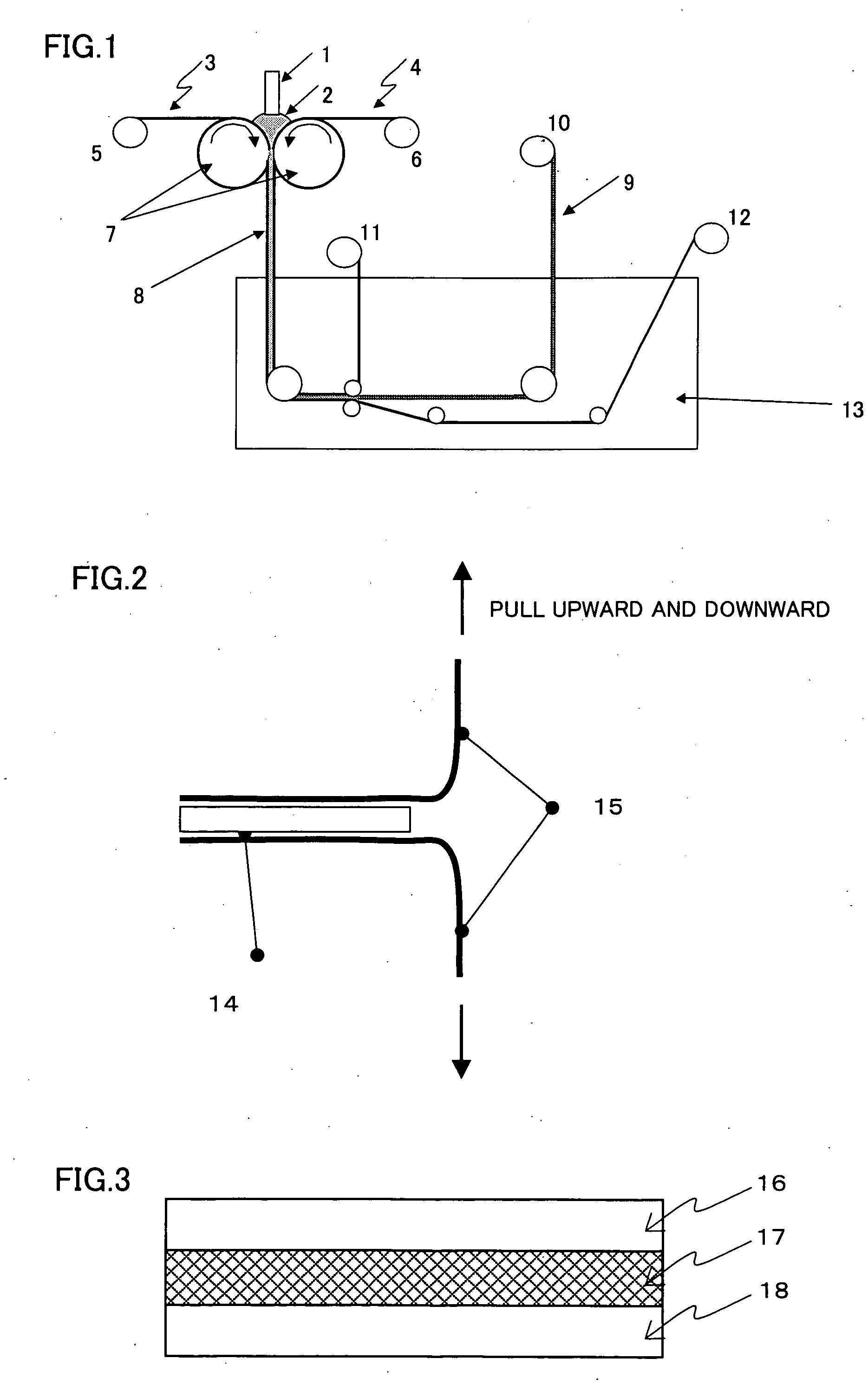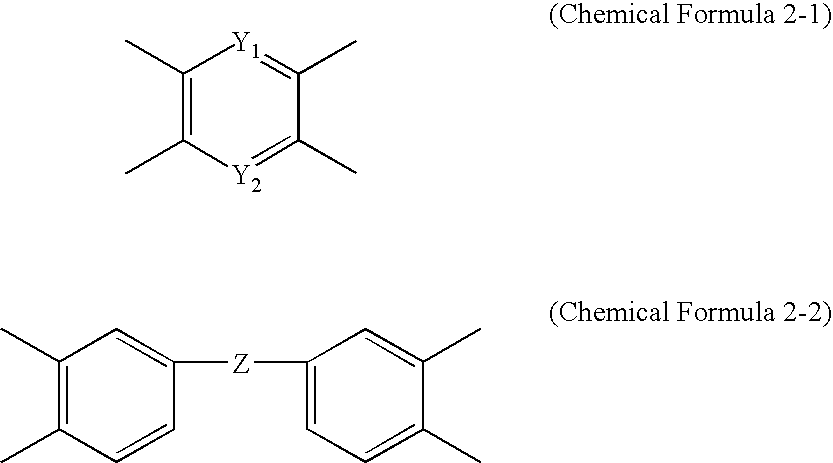Heat-resistant film and composite ion-exchange membrane
a technology of composite ion exchange and heat resistance film, which is applied in the direction of fuel cell details, final product manufacturing, chemical/physical processes, etc., can solve the problems of disadvantageous use of expensive devices such as dies and extruders, limited thickness accuracy of the resulting film, and uneven thickness of the resultant film. , to achieve the effect of excellent mechanical strength and ion conductivity, excellent heat resistance, and smoothness and interlaminar peeling resistan
- Summary
- Abstract
- Description
- Claims
- Application Information
AI Technical Summary
Benefits of technology
Problems solved by technology
Method used
Image
Examples
example a1
[0124] A solution containing 14% by weight of a polyphenylene cisbenzobisoxazole polymer of IV=24 dl / g in polyphosphoric acid was diluted with methanesulfonic acid to form an isotropic solution whose polyparaphenylene cisbenzobisoxazole concentration was 2.5% by weight. This solution was passed through a filter purported to have a pore size of 20 μm, and then sandwiched between two porous supports made from a polypropylene provided between two counter rolls, which were then rotated in opposite directions to roll the solution while feeding the solution together with the polypropylene porous supports, and then coagulated for 30 minutes in atmosphere of the chamber kept constantly at 25° C. and 80% relative humidity, and then introduced into a coagulation bath. The coagulation solution was water at 60° C. During the step described above, the gap between the counter rolls was adjusted so that the solution thickness became 200 μm. In the coagulation bath, the polypropylene porous support...
example a2
[0128] A solution containing 14% by weight of a polyparaphenylene cisbenzobisoxazole polymer of IV=24 dl / g in polyphosphoric acid was diluted with methanesulfonic acid to form an isotropic solution whose polyparaphenylene cisbenzobisoxazole concentration was 2.5% by weight. This solution was passed through a filter purported to have a pore size of 20 μm, and then sandwiched between two porous film supports made from a polypropylene provided between two counter rolls, which were then rotated in opposite directions to roll the solution while feeding the solution together with the polypropylene porous supports, and then coagulated for 30 minutes in atmosphere of the chamber kept constantly at 25° C. and 80% relative humidity, and then introduced into a coagulation bath. The coagulation solution was water at 60° C. During the step described above, the gap between the counter rolls was adjusted so that the solution thickness became 200 μm. In the coagulation bath, the polypropylene porou...
example b1
[0134] A 3% by weight solution of a polyparaphenylene terephthalamide resin whose logarithmic viscosity was 6 in 100% sulfuric acid was passed through a filter purported to have a pore size of 20 μm, and then sandwiched between two porous supports made from a polypropylene provided between two counter rolls, which were then rotated in opposite directions to roll a dope while feeding together with the polypropylene porous supports, and then introduced into a coagulation bath. The coagulation solution was 30% sulfuric acid at 25° C. During the step described above, the gap between the counter rolls was adjusted so that the solution thickness became constant. In the coagulation bath, the polypropylene porous supports were peeled off and the resin solution thin later was brought into contact with the coagulation solution to effect a further coagulation. A schematic view of the production method is shown in FIG. 1. Thereafter, the resin film thus formed was washed with warm water at 50° ...
PUM
| Property | Measurement | Unit |
|---|---|---|
| thickness | aaaaa | aaaaa |
| pore size | aaaaa | aaaaa |
| temperature | aaaaa | aaaaa |
Abstract
Description
Claims
Application Information
 Login to View More
Login to View More - R&D
- Intellectual Property
- Life Sciences
- Materials
- Tech Scout
- Unparalleled Data Quality
- Higher Quality Content
- 60% Fewer Hallucinations
Browse by: Latest US Patents, China's latest patents, Technical Efficacy Thesaurus, Application Domain, Technology Topic, Popular Technical Reports.
© 2025 PatSnap. All rights reserved.Legal|Privacy policy|Modern Slavery Act Transparency Statement|Sitemap|About US| Contact US: help@patsnap.com



